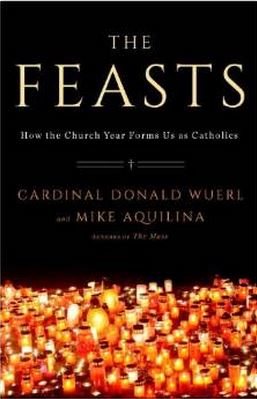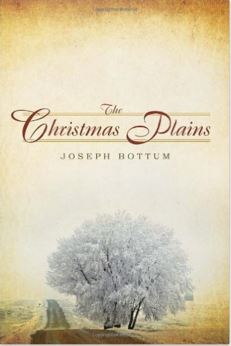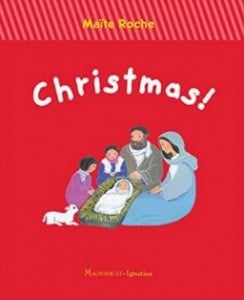 Sunday, June 7 is the Solemnity of the Most Most Holy Body and Blood of Christ (Corpus Christi).
Sunday, June 7 is the Solemnity of the Most Most Holy Body and Blood of Christ (Corpus Christi).
In anticipation of the feast, I want to remind you about Cardinal Donald Wuerl and Mike Aquilina’s The Feasts: How the Church Year Forms Us as Catholics. As a participant on their blog tour last year, I was asked to write about the Solemnity of the Body and Blood–and I’m only too happy to share this book with you.
The feast is celebrated around the world in so many ways. Here at Seasons of Grace, I’ve offered readers the opportunity each year to pray vicariously with fellow Catholics in Valencia, Spain, where the monstrance is paraded through the streets of the city:
![By Celestebombin (Own work) [GFDL (http://www.gnu.org/copyleft/fdl.html) or CC BY-SA 4.0-3.0-2.5-2.0-1.0 (http://creativecommons.org/licenses/by-sa/4.0-3.0-2.5-2.0-1.0)], via Wikimedia Commons](https://wp-media.patheos.com/blogs/sites/148/2014/09/El-Colacho-2-224x300.jpg)
And in Orvieto, the Italian city where is housed the corporal of the Eucharistic Miracle. It was this miracle which led Pope Urban IV to institute the feast of Corpus Christi, and to commission Thomas Aquinas to compose a set of hymns honoring the Real Presence of Christ in the Eucharist (among them, the Tantum Ergo and O Salutaris Hostia).
![By Abxbay (Own work) [CC0], via Wikimedia Commons](https://wp-media.patheos.com/blogs/sites/148/2014/09/Duomo_orvieto_-_reliquario_del_corporale-217x300.jpg)
The authors show how the Feast of Corpus Christi (now more commonly called the Solemnity of the Body and Blood of Christ) has profoundly moved great artists and sensitive souls, including the American novelist William Dean Howells, the novelist Edith Wharton, and 18th century heiress Elizabeth Bayley Seton, now a canonized saint in the Catholic Church.
The liturgical calendar, Cardinal Wuerl and Aquilina remind us, is a catechism. Indeed, the celebration of the Body and Blood of Christ is a response to heretical doctrines which grew up in the eleventh century, and which denied Christ’s Real Presence in the Eucharist. As with the other great feasts and seasons on the liturgical calendar, this solemnity has much to teach us about God’s nearness in the Sacred Host. “The Lord we receive in the Mass,” the authors explain,
“…is also present in our tabernacles. He is present in our monstrances and our processions, when we take him out into the world to proclaim him publicly as our King and Lord.”
Corpus Christi celebrations are a powerful sign; but the authors remind us that like every sign, the celebrations point to something still greater. We must receive Holy Communion with reverence, realizing that we take Christ with us into the world whenever we receive the Sacrament. We have received Christ and are one with him; we are his face and voice and hands and feet in the world.
With a Foreword by Archbishop Gomez of Los Angeles and a Preface by Father Peter John Cameron, O.P., editor-in-chief of Magnificat, The Feasts offers a perspective on how Catholic faithful count their days by celebrating the mysteries of Jesus’s life. It would be a great addition to your library.











